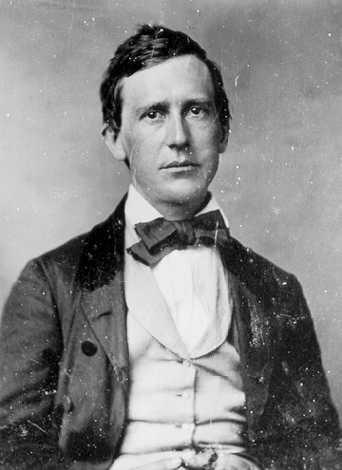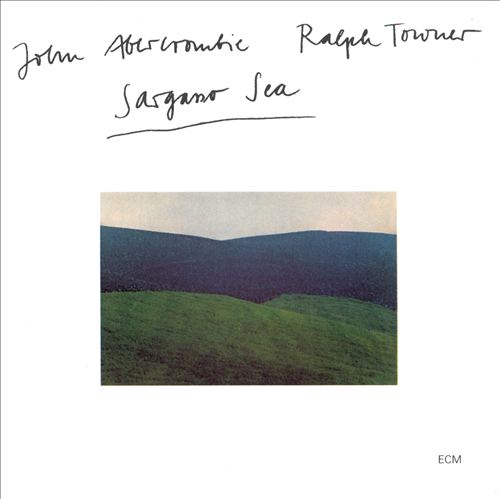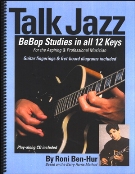Some times it is hard to believe but I have been chasing Robert Johnson’s music and ghost for fifty years and I have Eric Clapton to thank or blame for the chase depending on your point of view. In December, 1966 the record album, “Fresh Cream” was released by the British rock group “Cream” featuring Eric Clapton, Ginger Baker and Jack Bruce. The record included a track entitled “Four until Late” featuring Eric on vocals. I was fourteen years old and for some mysterious reason drawn to the tune. The listing on the back of the cardboard album cover credited the song to someone named Robert Johnson. I kept wondering who this fellow was and the name stuck in my head.
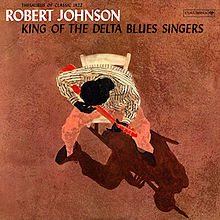
Almost a year later I was pawing through some records at a local store and stumbled across a Columbia record entitled, “Robert Johnson, King of the Delta Blues Singers” which depicted a painting of a man sitting on a chair playing a guitar. I studied the song listing on the back but “Four Until Late” was not listed…still this had to be the same Robert Johnson. I purchased the record but was not prepared for what followed. The songs had been originally recorded in 1936 and 1937 but through the scratchy grooves came a voice and a guitar so haunting, so very deep that it shook me. I studied the notes on the back of the record over and over focusing on the sheer poetry of some of the lyrics. “Robert Johnson, King of the Delta Blues” had been issued by Columbia in 1961 and at the time very little was known about the musician. The mystery surrounding Johnson amplified by his astonishing music grew to almost unbelievable proportions. There were no photographs of Johnson and his alleged encounter with Satan at the “cross roads” heightened the intrigue. For a time it seemed Robert Johnson was destined to take his place among other American folklore giants like “Pecos Bill” and “Paul Bunyan” except Robert Johnson had indeed lived and we had his recordings to prove it. These recordings sent the musicologist and historians scampering throughout the Delta to piece together Johnson’s life.

In 1989, Peter Guralnick’s book, “Searching for Robert Johnson” was published and it featured the only know photograph of Johnson on the cover which had been discovered in the same year by Steve LaVere. My hands trembled as I held the book at the Barnes & Noble bookstore in downtown Philadelphia. I studied the photo of Johnson holding a Gibson L-1 guitar, his long slender fingers, the jaunty tilt of his Stetson hat, and the crisp ironed creases in his suit. I was amazed.
In 1990, the mother load from the Columbia Record vaults was issued entitled, “Robert Johnson, The Complete Recordings”. Finally we had all of the known Johnson sides. The forty seven page booklet inside included a second discovered photograph of Johnson, a reproduction of his death certificate, the lyrics to his songs and essays covering his life and influence. We learned that Johnson died on August 16th, 1938 in Greenwood, Mississippi under mysterious circumstances. He was only twenty seven years old. Since that time, numerous books, a documentary, music transcriptions and tribute records have been published exploring Johnson’s life and music. The interest in Johnson’s life and music remains high and the flood continues to this day.
However, the circumstances involving Robert Johnson’s death and the exact location of his burial site remain shrouded in mystery. In 2014, I made a journey alone to the Mississippi Delta to visit the three possible Robert Johnson grave sites and some of the places mentioned in his songs.
In the song, “Traveling Riverside Blues”, Johnson mentions Friars Point, Rosedale and Vicksburg. I visited all three places but found Friars Point especially haunting. It is a small poor hamlet which was a center of commerce from nearby plantations. There is a small row of storefronts where Muddy Water’s stated he saw Johnson playing on the street. Here are those store fronts at Friar’s Point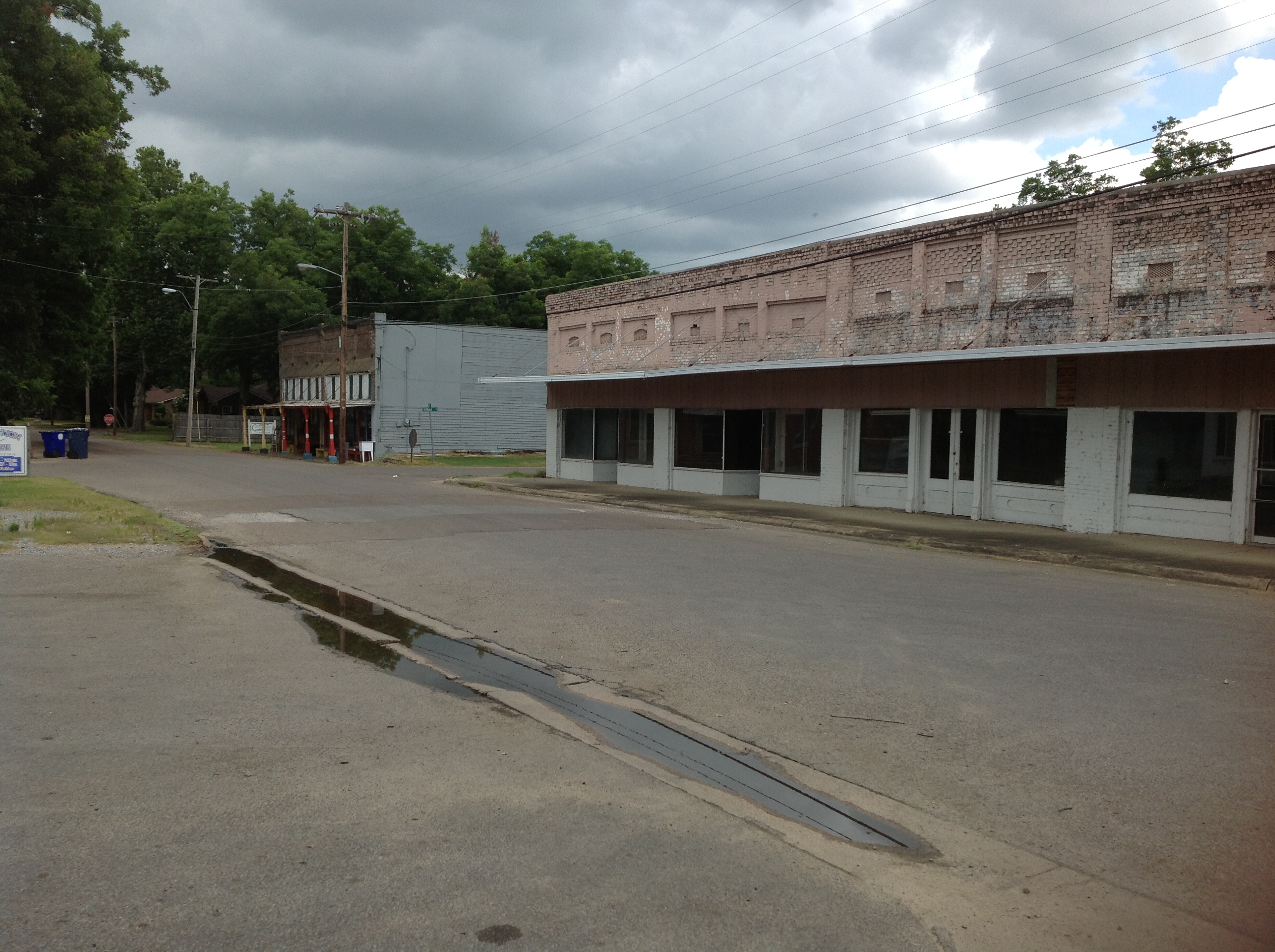 where Johnson performed.
where Johnson performed.
I had arrived at Friars Point around dusk, it was a Sunday and there wasn’t a soul around. As I stood there I could almost see Johnson standing there with his guitar, performing for loose change in front of the storefronts.
Finding Robert Johnson’s grave site was another matter entirely since the exact location of his grave is officially unknown and there are three possible church grave yards with markers erected around the outskirts of Greenwood, Mississippi where he might be buried. I decided to visit all three and let the vibes I might feel determine Robert’s final resting place. The first site I visited was the Payne Chapel near Quito, Mississippi.
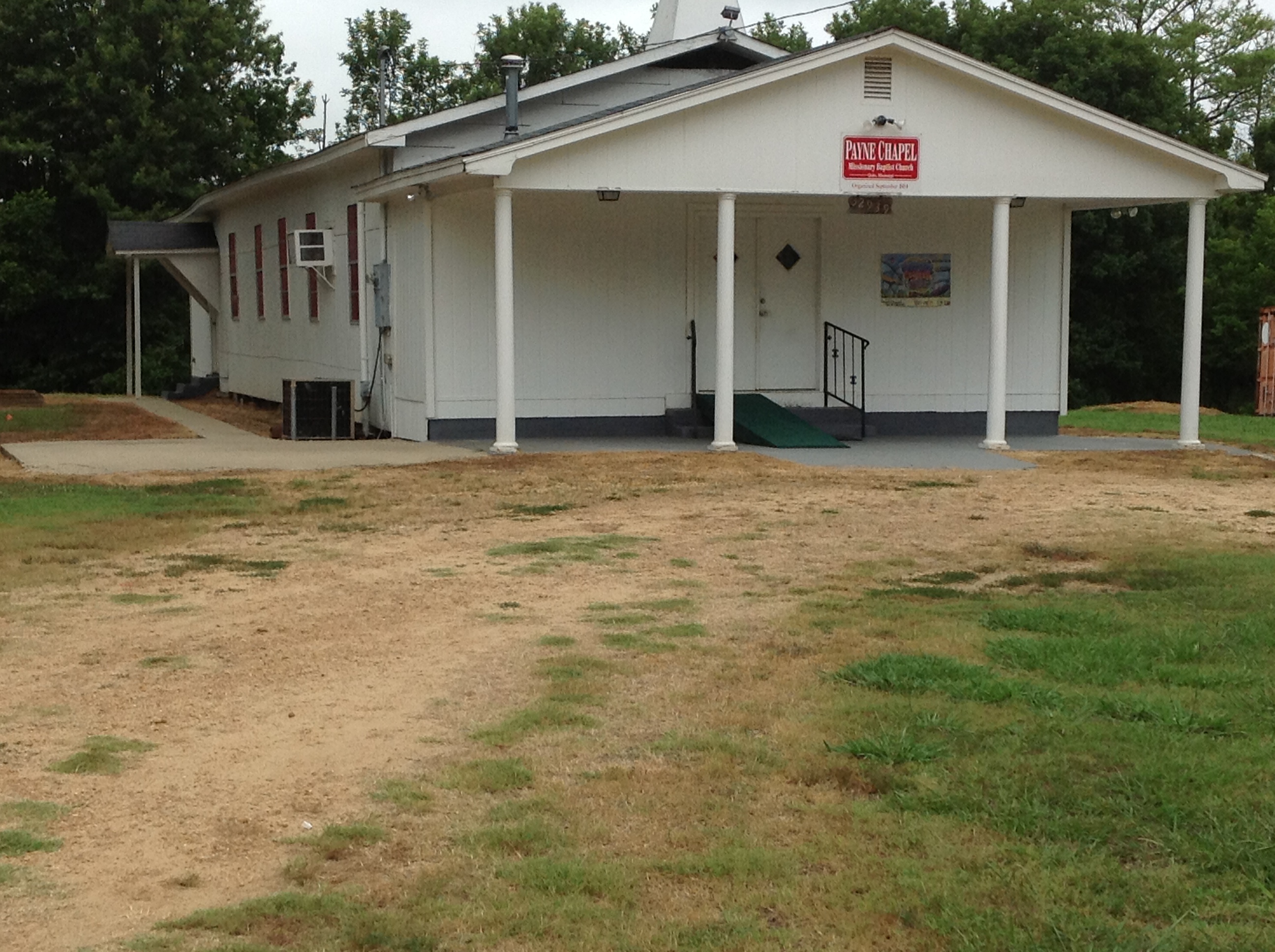
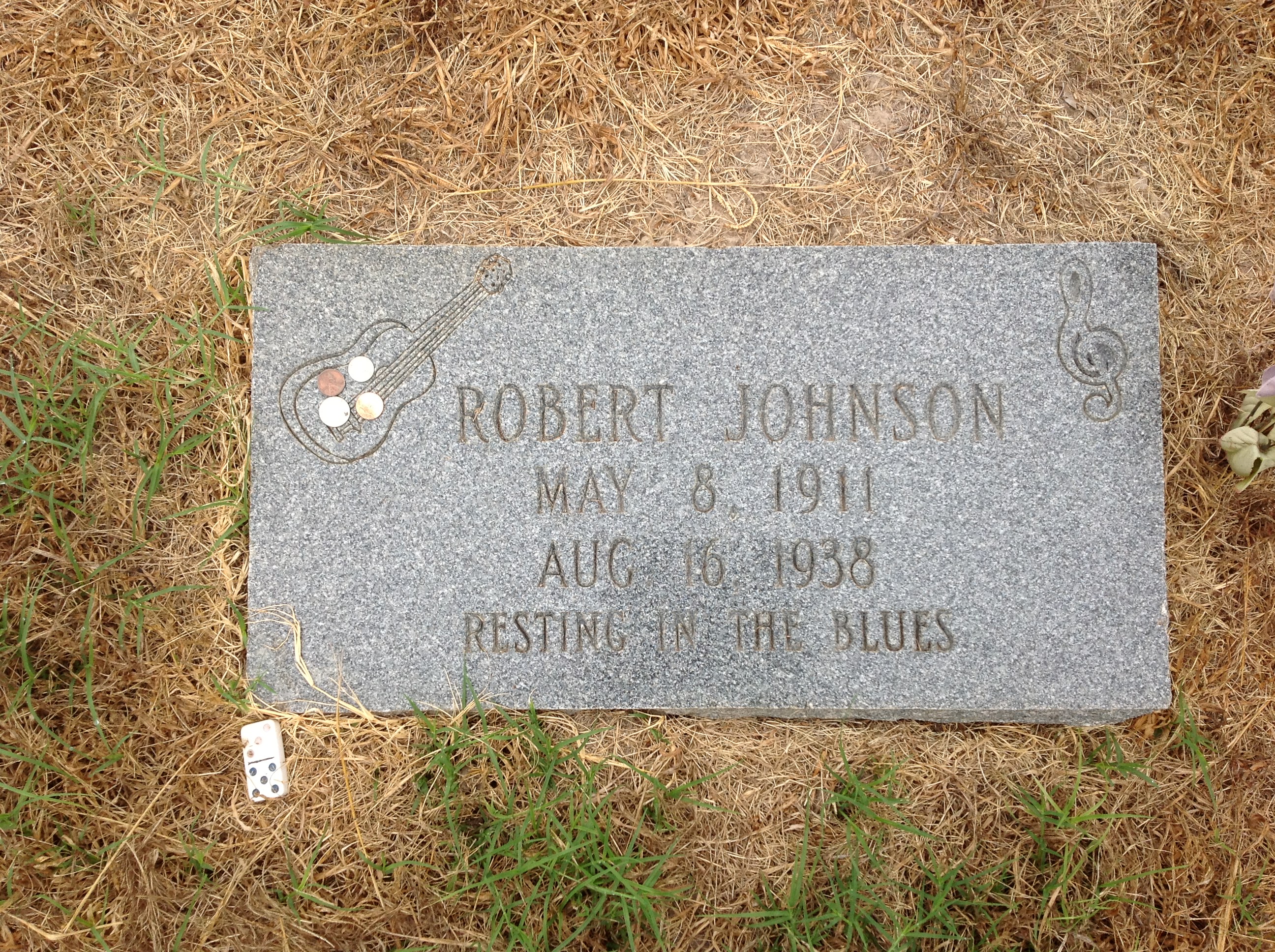 It was early Monday morning and nobody was around. I wandered around the cemetery studying each headstone. I was getting a little flustered and wondered if I was at the right place. It had taken me some time to find the church. I calmed myself, reflected and turned around and there it was.
It was early Monday morning and nobody was around. I wandered around the cemetery studying each headstone. I was getting a little flustered and wondered if I was at the right place. It had taken me some time to find the church. I calmed myself, reflected and turned around and there it was.
The stone read, “Resting in the Blues”. I stood there for a while, said a prayer but did not feel anything special. I was not to sure that he was buried here.
After a few minutes, I got in my car and drove about six miles to Morgan City, which wasn’t a city at all but just a little crossroad hamlet. I saw a church but it did not turn out to be Mount Zion Missionary Baptist Church where Johnson might be buried. I pulled my car over to a small dilapidated gas station where a few workers were gassing thier cars. The two men looked at me suspiciously as I approached, “Excuse me gentlemen, I’m looking for the Mount Zion Missionary Baptist Church where Robert Johnson is buried.” They gave me a whimsical look, realizing I was another Blues tourist and kindly gave me directions “Go back down the road. Make a right at the third intersection and follow the road along the river until you come to a bend in the road….the church is on your left.” I thanked them and motored back down the road. Their directions were great but I drove right by the church and had to turn around after a couple of miles til I saw a small white wooden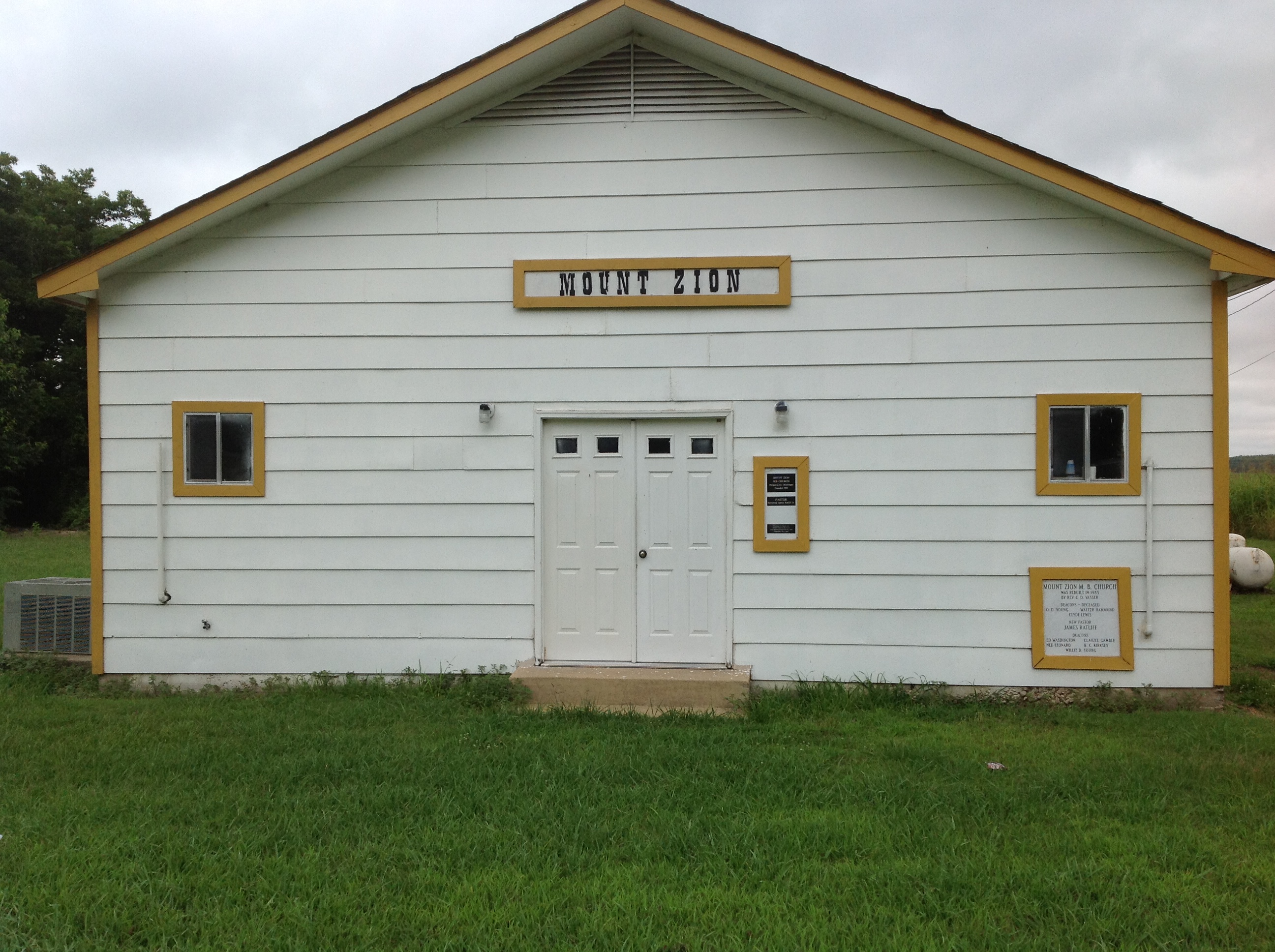 building.
building.
Supposedly Robert Johnson was buried in an unmarked grave in the church lot. There were not a lot of other grave markers so it was not hard to see the large granite marker placed in the yard by John Fogerty, Peter Guralnick and Columbia Records in 1990.
I studied the monument for a while reading the inscriptions carefully. It sure was a peaceful spot but I did not feel anything extraordinary. Although it was certainly possible, I did not think Robert was resting here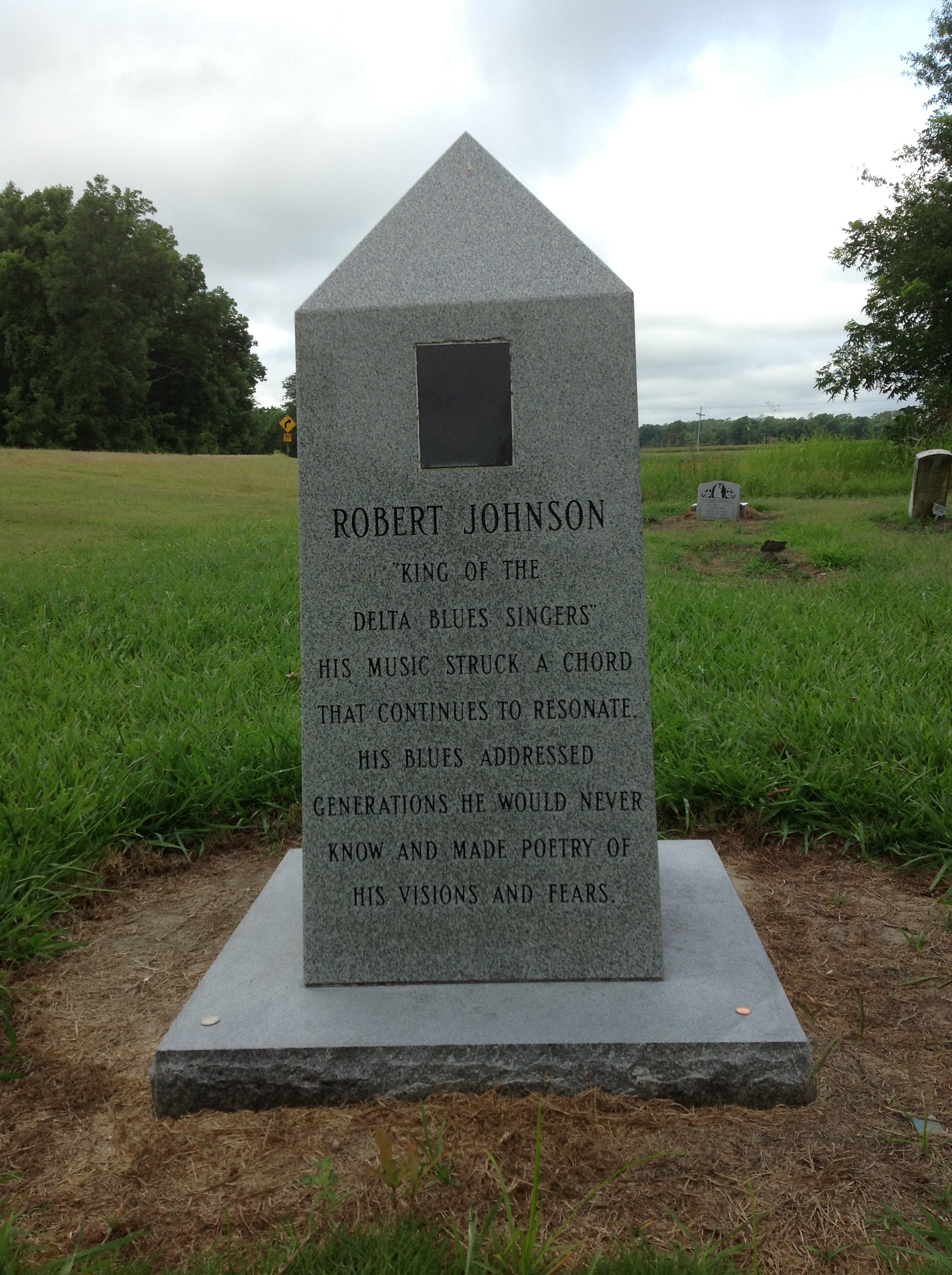
I sat for a few minutes resting in the Delta heat and said another silent prayer before pushing on to the third possible grave site located at the Little Zion Church just north of Greenwood.
Greenwood, Mississippi turned out to be an interesting and thriving little town for the Delta. I parked my car downtown right in front of the Greenwood Chamber of Commerce and walked right in. Behind the counter stood a handsome elderly woman with a regal bearing. Her shiny gray hair was tied back neatly in a bun. ” Hello sir, welcome to Greenwood….how can I help you?”, what a charming woman I thought. Her diction was clear but dripped with a honey Southern accent. “Well, I’m looking for the Robert Johnson grave site…I already visited two of them but I am looking for the Little Zion Church grave site. I need directions…”, I asked, suddenly realizing I was a little embarrassed since I had been on the road and looked like a mess. “Ahh….Robert Johnson…..of course I can help you. Did you know the grave site at Little Zion is the only one officially authenticated by the State of Mississippi? We are certain poor Robert is buried there.”, she answered. Then she proceeded to tell me in a detailed manner the entire story of the identification of the site by the graveyard digger’s daughter, Rose Eskridge who witnessed the burial. Apparently the Little Zion Church, was very near to the tenant shacks on the plantation were Robert Johnson died. the kind women gave me exact directions and wrote them down in neat handwriting for me. I thanked her profusely and started towards the door. “Watch out for snakes in the high grass when your out there!”, she warned as I walked out. “Snakes…………I guess they tie into the myth of Johnson selling is soul to the devil.“, I mused.
Her directions led me north out of Greenwood across the Yazoo River until green plantation farm fields lined each side of the two lane road. After about six miles, I saw the church on the left side of the road. 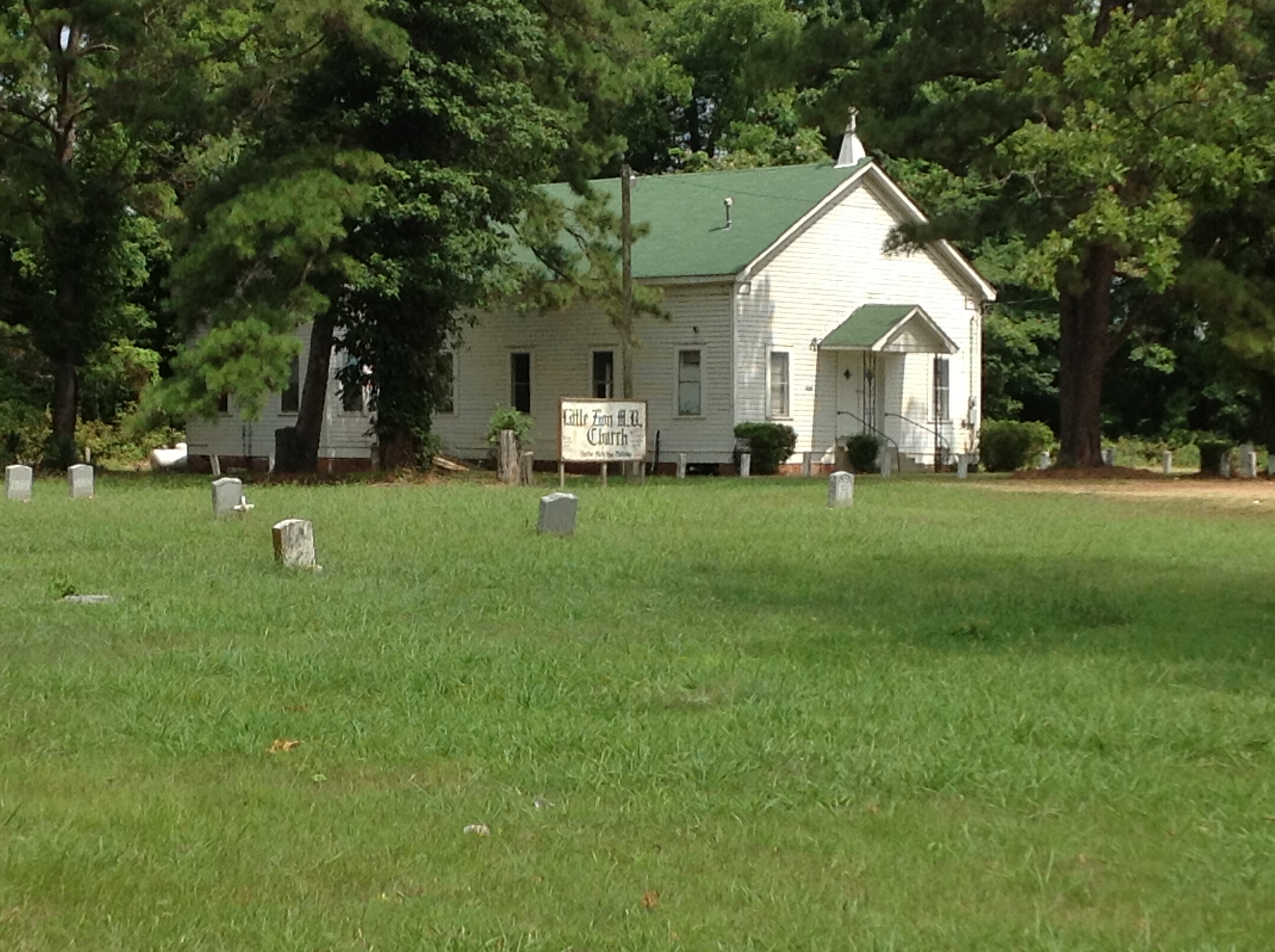
There was a historical sign post marking the location and I noticed the words, ” He is thought to be buried in this graveyard.”
 The nice lady from the Greenwood Chamber of Commerce, specifically said that the grave was located towards the back of the cemetery and situated under a large tree. I started walking through the grass, reading the the gravestones with one eye and watching out for snakes with the other. Then I spotted a large tree towards the back of the cemetery.
The nice lady from the Greenwood Chamber of Commerce, specifically said that the grave was located towards the back of the cemetery and situated under a large tree. I started walking through the grass, reading the the gravestones with one eye and watching out for snakes with the other. Then I spotted a large tree towards the back of the cemetery.
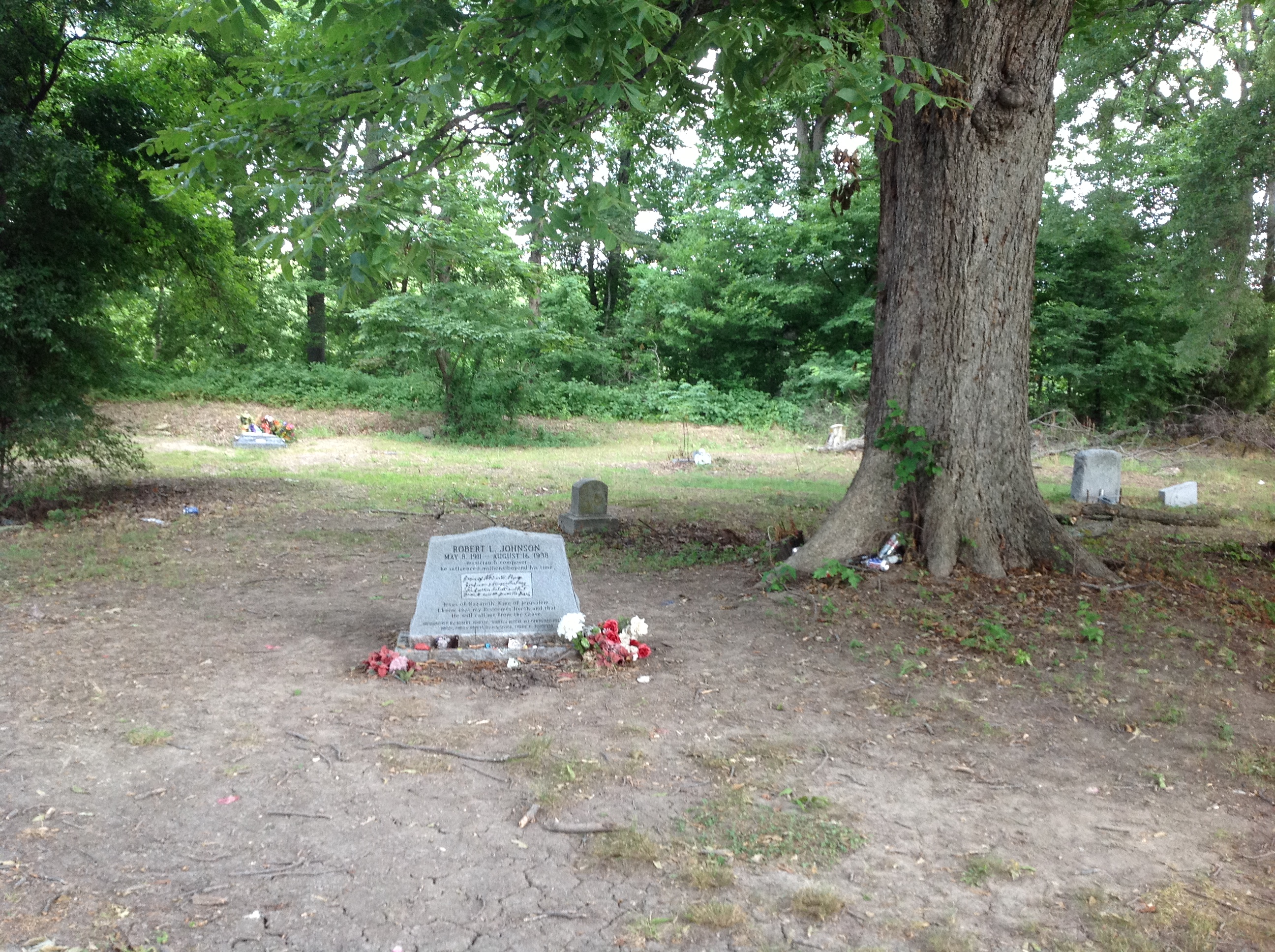 Underneath the tree lay a head stone with some flowers scattered along the base. As I walked towards the grave, there was a light warm breeze coming across the Delta farm fields. The leaves in the tree above the grave gently rustled. Somehow, I knew Robert Johnson, the great blues poet was buried here. I had no doubt. I had a feeling of certainty and said a silent prayer.
Underneath the tree lay a head stone with some flowers scattered along the base. As I walked towards the grave, there was a light warm breeze coming across the Delta farm fields. The leaves in the tree above the grave gently rustled. Somehow, I knew Robert Johnson, the great blues poet was buried here. I had no doubt. I had a feeling of certainty and said a silent prayer.
Along the base and top of the grave marker, other blues pilgrims had places coins, guitar picks, bottleneck slides and flowers. I stood there and soaked it all in. Here was a twenty-seven year old, uneducated wandering Blues musician who’s scant recordings from the thirties became the bedrock of modern Blues and Rock & Roll. During his lifetime, he was hardly a blip in time. Now famous musicians, rock stairs and Blues devotees from around the world travel to this site to pay their respects. Mutual respect from fellow musicians is the thing most highly treasured by all musicians. After over 75 years Robert Johnson is still receiving the deserved respect from musicians all around the world.
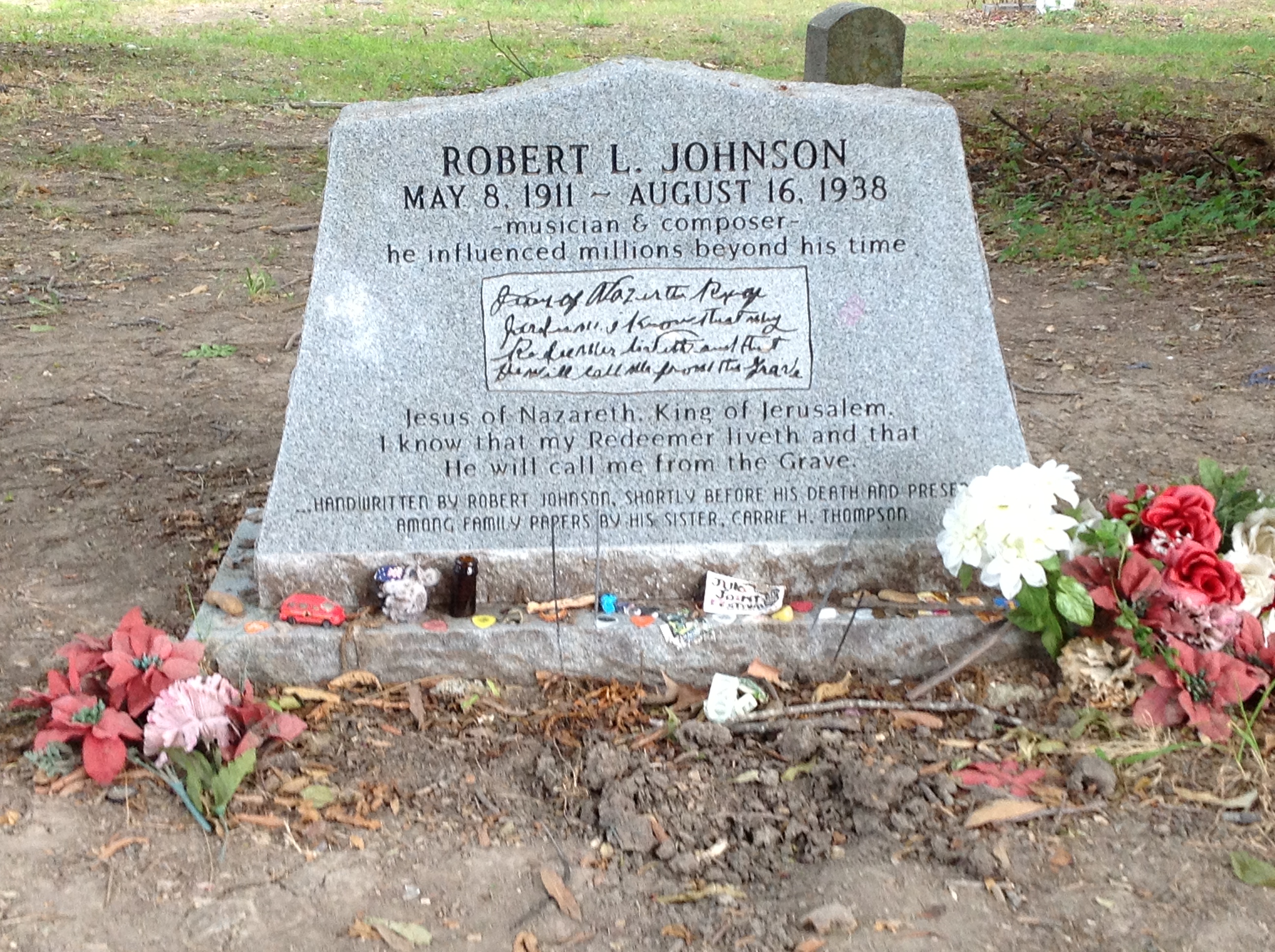 I was alone in the cemetery that morning and I sat for some time reflecting on Robert Johnson’s music and my sojourn to this place after so many, many years. What did it all mean? Since 1966, I have drawn oceans of inspiration from listening to and playing Robert Johnson’s music and I have return to the his musical well over and over, always learning or feeling something new. Yes… I thought, that is what it all means. Thank you Robert Johnson.
I was alone in the cemetery that morning and I sat for some time reflecting on Robert Johnson’s music and my sojourn to this place after so many, many years. What did it all mean? Since 1966, I have drawn oceans of inspiration from listening to and playing Robert Johnson’s music and I have return to the his musical well over and over, always learning or feeling something new. Yes… I thought, that is what it all means. Thank you Robert Johnson.
If you wish to learn more about Robert Johnson and his music I highly recommend you check out:
- “Searching for Robert Johnson” by Peter Guralnick
- “Crossroads, The Life and Afterlife of Blues Legend, Robert Johnson” by Tom Gravas
- “Escaping the Delta, Robert Johnson and the Invention of the Blues” by Elijah Wald
- “Robert Johnson, The Complete Recordings” – Columbia Records
Please check out my humble rendition of Robert Johnson’s classic, “Come into My Kitchen” in the video section of this website.











